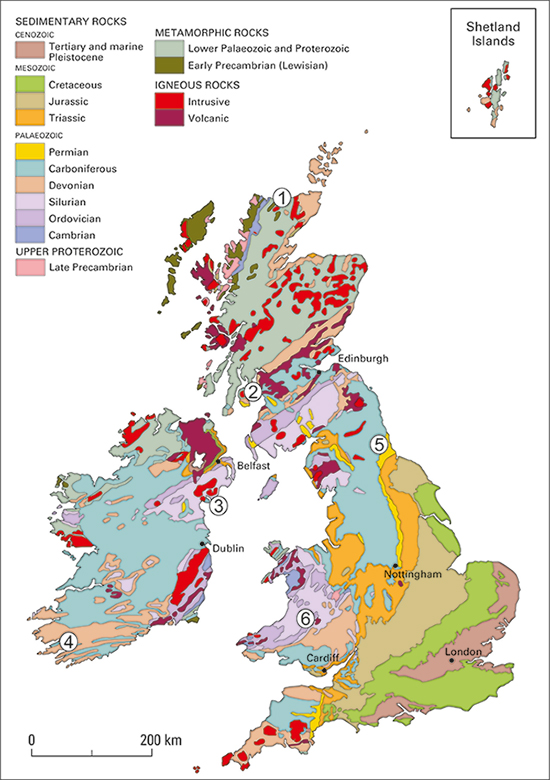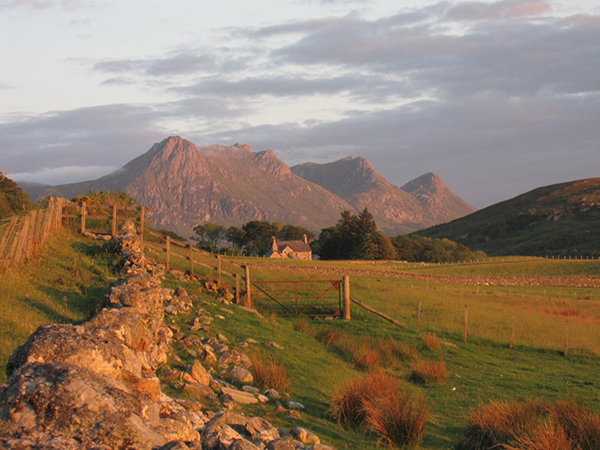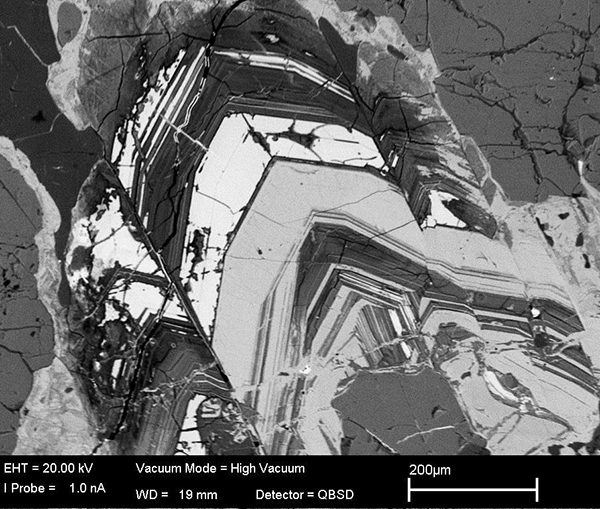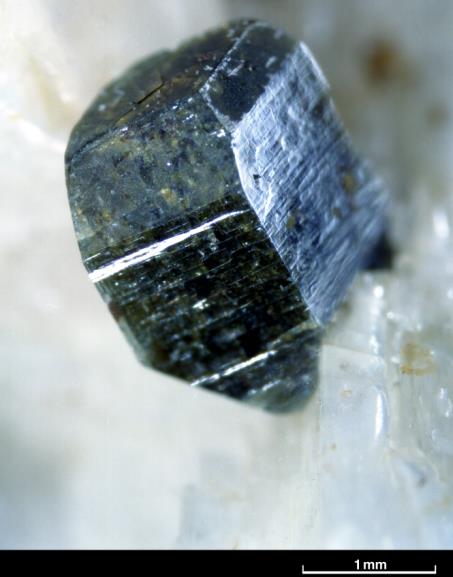REE mineralisation in the UK and Ireland
Although there has been no systematic evaluation of REE resources in the British Isles, REE enrichment is known to occur in a range of geological settings. The British Isles have a long and complex geological history, and it is likely that further examples of REE mineralisation remain to be discovered.
Geology of the British Isles
The geology of the British Isles varies from Archaean rocks of the North Atlantic craton in the far north west of Scotland, through Proterozoic and Palaeozoic sequences to Mesozoic sedimentary rocks in the south east of England. The British Isles have experienced a number of orogenic events, most notably the Caledonian Orogeny in the north and the Variscan orogeny in the south. Alkaline magmatism associated with post-collisional and extensional settings is widespread, particularly in Scotland, Northern Ireland and south west England, and hosts the most significant known examples of REE mineralisation. Some REE mineral occurrences are also found in areas of hydrothermal vein mineralisation better known for lead and zinc exploitation. Secondary REE mineralisation formed by diagenetic processes has been recognised in Palaeozoic sedimentary rocks in Wales and southern England.
REE in alkaline igneous rocks and carbonatites
The most significant enrichments of the REE known in the British Isles are in north west Scotland, in Silurian alkaline igneous intrusions that were emplaced at the end of the Caledonian Orogeny. In the Loch Loyal syenite complex, veins of hydrothermally altered mafic syenite that are rich in allanite and apatite contain up to 2 wt per cent total rare earth oxides (Walters et al., 2013). During the Palaeogene, rift related igneous complexes associated with the opening of the North Atlantic developed in western Scotland and Northern Ireland. Occurrences of REE-bearing minerals such as fergusonite and gadolinite are found in several of these complexes, most notably in the Northern Arran granite in Scotland and in the Mourne Mountains of Northern Ireland, where REE minerals are locally concentrated in alluvial sediments derived from the granites. Carbonatites are rare in the British Isles, with the most important being the Permian Beara-Allahies carbonatite in western Ireland (Brady and Moore, 2012). This has previously been mined for copper, and has minor enrichment in REE.
REE in hydrothermal systems
REE minerals have been identified within lead-zinc-fluorite veins in the North Pennine orefield of northern England, where they are associated with bismuth-bearing quartz veins. The mineral assemblage includes the fluorcarbonates synchysite and bastnäsite, as well as monazite and xenotime.
REE in nodular monazites
Monazite nodules are found in Lower Palaeozoic sedimentary rocks of central Wales and also in the Variscan sedimentary succession of south west England. These nodules were formed through diagenetic processes during sediment compaction (Milodowski and Zalaciewicz, 1991) and have been further concentrated as placers in modern alluvial sediments. They show zonation of the light REE and heavy REE and are unusually high in europium but low in thorium. However, further work would be needed to assess their economic importance.
Key references
Brady, A E, and Moore, K R. 2012. A mantle-derived dolomite silicocarbonatite from the southwest coast of Ireland. Mineralogical Magazine 76(2), 357–376.
Hyslop, E K, Gillanders, R J, Hill, P G, and Fakes, R D. 1999. Rare-earth bearing minerals fergusonite and gadolinite from the Arran granite. Scottish Journal of Geology, vol. 35, p65–69.
Milodowski, A E, and Zalasiewicz, J A. 1991. Redistribution of rare earth elements during diagenesis of turbidite/hemipelagite mudrock sequences of Llandovery age from central Wales. Geological Society Special Publication 57, 101–12.4
Walters, A S, and Lusty, P. 2011. Rare Earth Elements. British Geological Survey commodity profile.
Walters, A S, Goodenough, K M, Hughes, H S R, Roberts, N M W, Gunn, A G, Rushton, J, and Lacinska, A. 2013. Enrichment of Rare Earth Elements during magmatic and post-magmatic processes: a case study from the Loch Loyal Syenite Complex, northern Scotland. Contributions to Mineralogy and Petrology 166, 1177–1202.




